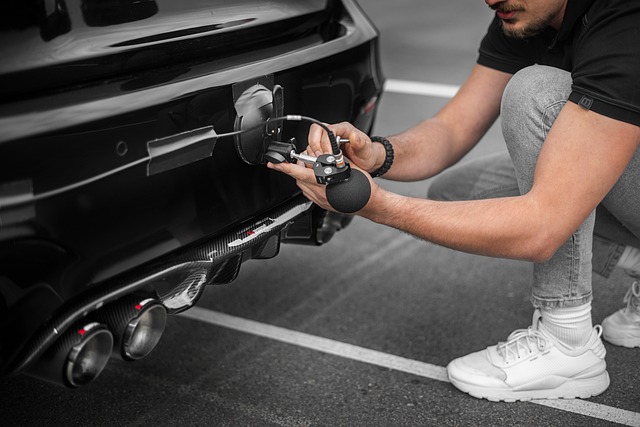Looking to register your car in California? This comprehensive guide walks you through every step, from understanding eligibility requirements for car registration in California to completing the DMV registration process. Learn how to gather necessary documents for a successful DMV VIN verification and prepare your vehicle for inspection and title transfer. Discover post-registration tasks and important considerations to ensure a smooth experience.
- Understand Eligibility Requirements for Car Registration in California
- Gather Necessary Documents for DMV Vin Verification
- Prepare Your Vehicle for Inspection and Title Transfer
- Complete the DMV Registration Process Step-by-Step
- Post-Registration Tasks and Important Considerations
Understand Eligibility Requirements for Car Registration in California

Before you begin the registration process, it’s crucial to understand the eligibility requirements set by the California Department of Motor Vehicles (DMV). To register your car in California, your vehicle must meet certain standards and have a valid DMV vin verification. This includes ensuring that the car is not listed as stolen, has no outstanding recalls, and meets all safety and environmental regulations. Additionally, you’ll need to provide proof of insurance and pass an emissions test if applicable.
One convenient option to streamline this process is by utilizing a mobile vin verifier or conducting a mobile vin inspection. These services allow you to verify your car’s history and ensure it complies with California’s requirements from the comfort of your home. By having all the necessary documentation ready, including your vehicle identification number (VIN), you can make the registration process at the DMV more efficient and avoid potential delays.
Gather Necessary Documents for DMV Vin Verification

To register your car in California, you’ll need to undergo a DMV VIN (Vehicle Identification Number) verification process. This step is crucial as it ensures that your vehicle meets all legal requirements before it can be registered and titled. Gather essential documents including your vehicle’s registration certificate from the previous state, proof of insurance, and a valid driver’s license or state ID card. Additionally, you’ll need to present a completed DMV Form 46 (Application for Title and Registration).
For a smoother process, consider using a mobile VIN inspection or mobile VIN verifier service. These services can help you complete the verification step conveniently by providing on-site assessments and documentation validation. They often offer fast turnaround times and can be particularly useful if you’re new to the area or face challenges in gathering all necessary documents from different sources.
Prepare Your Vehicle for Inspection and Title Transfer

Before heading to the California DMV for registration, ensure your vehicle is ready with a smooth process that includes preparing for both the VIN (Vehicle Identification Number) verification and title transfer. Start by obtaining all necessary documents, such as the title from the previous owner and your purchase agreement or bill of sale. The DMV will require a clean bill of health for your car, so arrange a mobile VIN inspection if needed to ensure there are no outstanding issues with the vehicle’s history.
During this preparation, double-check that your vehicle meets all safety and environmental standards set by California. This includes checking emissions levels, ensuring proper functioning of lights and brakes, and confirming that any aftermarket modifications comply with legal requirements. A thorough pre-inspection not only facilitates a smoother registration process but also assures you that your car is safe for road use, making the drive ahead worry-free.
Complete the DMV Registration Process Step-by-Step
To complete the DMV registration process for your car in California, follow these step-by-step instructions. First, gather all necessary documents including your vehicle’s registration and title, driver’s license, proof of insurance, and a valid California ID card or passport. Once you have these, visit your local DMV office or use their online services for efficient DMV vin verification.
Next, fill out the registration form, ensuring accurate completion. Provide detailed information about your vehicle, including its make, model, year, and vin inspection results. If using a mobile vin verifier, ensure the app provides an error-free report to avoid delays. After submission, you’ll typically receive your registered license plate and official registration document within a few weeks.
Post-Registration Tasks and Important Considerations

After successfully registering your vehicle with the California Department of Motor Vehicles (DMV), there are several crucial post-registration tasks to complete. One essential step is to obtain a Vehicle Identification Number (VIN) verification, which can be done through a mobile vin inspection or a local mechanic. This process ensures that the vehicle’s details match the information provided during registration and helps deter theft.
Additionally, you’ll need to ensure that all necessary insurance paperwork is in order and that your vehicle complies with state safety standards. Keep accurate records of these documents for easy reference in case of future transactions or routine checks by the DMV. Remember, timely attention to these considerations can save you from potential issues down the line, ensuring a smooth ownership experience.
Registering a car in California involves understanding eligibility requirements, gathering essential documents for DMV VIN verification, preparing your vehicle for inspection and title transfer, completing the registration process step-by-step, and handling post-registration tasks. By following these straightforward steps and ensuring proper documentation, you’ll successfully navigate the process, making your vehicle legal to drive on California roads. Remember, a well-prepared journey begins with accurate and complete paperwork!
